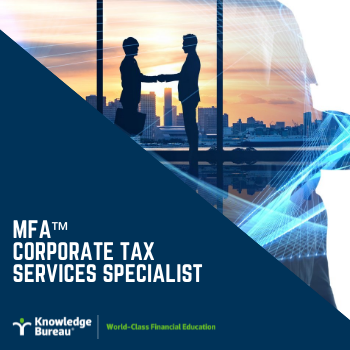Last updated: February 16 2022
Complexity: Consequences of Tinkering with the CCA System

Walter Harder
Investing in asset upgrades this year? What can be written off over time? The answer is increasingly cloudy. Recent tinkering with the tax system to promote certain economic activities has allowed for accelerated write-offs, but that has caused significant complexity. With the introduction of an accelerated write-off of capital items purchased by a Canadian Controlled Private Corporation (CCPC) to a maximum of $1,500,000, the net tax consequences over the lifetime of the asset’s use require more thought.
Investing in asset upgrades this year? What can be written off over time? The answer is increasingly cloudy. Recent tinkering with the tax system to promote certain economic activities has allowed for accelerated write-offs, but that has caused significant complexity. With the introduction of an accelerated write-off of capital items purchased by a Canadian Controlled Private Corporation (CCPC) to a maximum of $1,500,000, the net tax consequences over the lifetime of the asset’s use require more thought.
The CCA (Capital Cost Allowance) regime, as originally designed, included a reduced write-off in the first year (the half year rule) as the asset was not owned for a full year, a diminishing balance of value over time, and recapture and terminal allowance provisions to deal with under or over deductions when the asset is finally disposed of.
One of the first corruptions of the system was the introduction of class 10.1 for passenger vehicles, where the purchase price was fixed if over a set amount (originally $30,000 plus taxes, increased to $34,000 for 2022). If the vehicle cost exceeded the maximum amount, the excess was a non-deductible expense. Assets in this class were allowed a fixed annual rate (30%) for each year the asset was owned. In the year of acquisition and the year of disposition, the rate was 15%, and there was no reconciliation of the allowance claimed to the actual decrease in value of the vehicle.
 In recent years, there have been so many temporary changes to the system that it is barely recognizable anymore. For purchases of most assets after November 20, 2018, and before the end of 2023, the reduced first-year claim is suspended and, instead, taxpayers may claim up to 150% of the normal amount in the first year. This Accelerated Investment Incentive Property (AIIP) provision was designed to encourage businesses to invest in capital assets.
In recent years, there have been so many temporary changes to the system that it is barely recognizable anymore. For purchases of most assets after November 20, 2018, and before the end of 2023, the reduced first-year claim is suspended and, instead, taxpayers may claim up to 150% of the normal amount in the first year. This Accelerated Investment Incentive Property (AIIP) provision was designed to encourage businesses to invest in capital assets.
Here's how it works: in the year of acquisition, a larger CCA claim can be made, but the result is a lower undepreciated capital cost (and thus lower CCA claims) for the remainder of the life of the asset. In addition, the result will likely be an increase in recapture when the asset is disposed of. For class 10.1 assets, the extra CCA claim in the year of acquisition, coupled with the fact that there is no recapture, will mean that, over the ownership period, the CCA claim for the vehicle is likely to be increased by AIIP.
The next corruption to the system was the introduction in the 2019 Budget of new classes for zero-emission vehicles. Class 54 was introduced to encourage the purchase of such vehicles. The first-year CCA claim in this case was 100% of the cost of the vehicle if purchased before the end of 2023, although the amount eligible for deduction was limited to $55,000 plus taxes (increased to $59,000 plus taxes for 2022).
When the zero-emission vehicle was later sold, recapture would result in the inclusion of some of the CCA claimed being added back into income. For the purposes of the recapture computation, the proceeds of disposition are prorated by the ratio of the amount added to the class ($55,000 plus taxes prior to 2022) to the total cost of the vehicle.
For example, if the vehicle was purchased for $65,000 (taxes included), the cost for CCA purposes was $57,750, written off in the year of purchase and if the vehicle was later sold for $40,000, the recapture is $57,750/$65,000 x $40,000 = $35,538. This amount would be added back to income in the year of disposition.
In the 2021 Federal Budget, the government proposed to allow accelerated write-off of capital items purchased by a Canadian Controlled Private Corporation (CCPC) to a maximum of $1,500,000 for purchases of “eligible assets” made after April 19, 2021, and the available for use before the end of 2023. The proposed legislation to implement this change was presented in early February 2022 and will also allow partnerships and proprietorships to write off the cost of capital assets purchased after December 31, 2021 and made available for use before 2025 to the same maximum of $1,500,000.
What these proposals mean is that a business can claim a 100% CCA rate in the year the asset is available for use. Like the accelerated investment incentive program, for most assets, this means a large (100%) first-year write-off and subsequent recapture of the ending value of assets when they are disposed of.
However, class 10.1 assets fall into the list of “eligible assets,” and this class normally has no recapture rules. Now, new rules will apply to Class 10.1 if CCA is claimed on the asset at 100%. Like the rules for Class 54 zero-emission vehicles, if a business writes off a passenger vehicle in class 10.1, recapture will apply to that vehicle, and the proceeds of disposition will be prorated by the ratio of the amount added to Class 10.1 ($34,000 plus taxes if purchased after 2021) to the actual cost of the vehicle.
These complexities may seek to encourage certain activities within the marketplace. But they may not serve the purchaser well, if the net after-tax outcomes of the acquisition and disposition of the asset, as well the available write-off throughout the lifetime of the ownership period are not understood and used to the taxpayer’s best advantage.
Both advisors and their clients will need to stop and do the math before making these investments to understand future tax risk.
Additional educational resources: these changes and other pertinent tax changes will be discussed at the May 18, 2022 Virtual CE Summit from a retirement and estate planning point of view.

